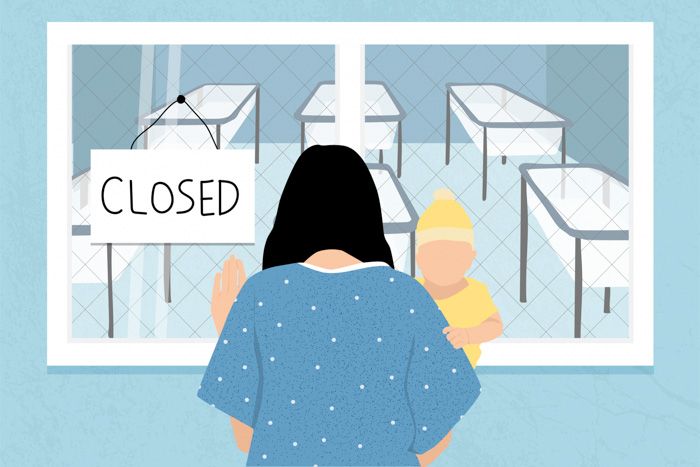While Melanie Forstall knew she would be giving birth in a hospital without a nursery, she was in no way prepared for what that would mean.
Her Baton Rouge-based hospital practiced rooming-in, where mother and baby would remain together the whole stay. It was better for the bonding experience, she was told.
But after 48 hours with a nursing baby and no sleep, she begged her nurse for help and got a break for 30 minutes while the baby was taken for a checkup. Her husband held the baby another three hours during the night so she could sleep. “I finally felt human again,” recalls Forstall.
Where Did All the Nurseries Go?
Experiences like Forstall’s aren’t unusual. Rooming-in is part of the Baby-Friendly Hospital Initiative (BFHI) launched by the World Health Organization and UNICEF in 1991 in an effort to raise breastfeeding rates around the world. The first opened in the U.S. in 1996 and since then 25 percent of babies are born every year in a Baby-Friendly-certified hospital. (The Baby-Friendly USA site includes a place to search for specific hospitals.)
In order to become certified, hospitals must adopt 10 steps that include telling moms about the benefits and management of breastfeeding, helping them start breastfeeding within the hour after birth, and allowing infants to remain with moms for 24 hours. The latter is a point that has received backlash from parents and experts alike.
This spreads the belief that mothers should be caring for their babies full time, with support only when they need it or ask for it, says Harvey Karp, M.D. “That’s completely abnormal,” adds the author of Happiest Baby on the Block and inventor of the SNOO, Smart Sleeper.
While Baby-Friendly USA explains it doesn’t force mothers to care for their babies “every minute of their stay” or require newborn nurseries to close, these are trends that have been taking place across the country.
Read the rest of this article over at Parents.com.

